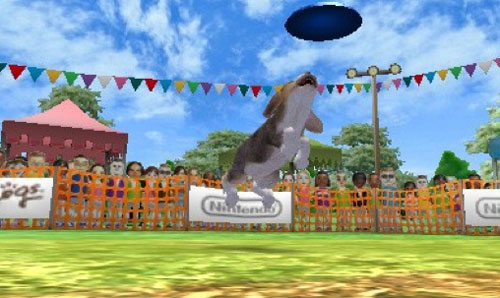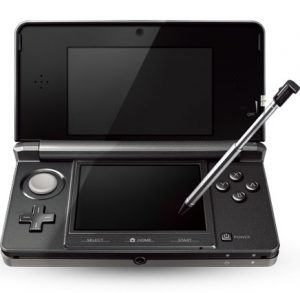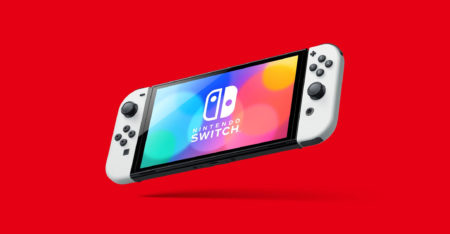
Nintendo’s handheld gaming systems face growing competition from smartphones and tablets that offer a selection of addictive games that cost less than a dollar or even nothing at all. With the Nintendo 3DS, the Japanese gaming company’s answer to the challenge is to pack as many cutting-edge features into a tiny device as it possibly can.
At nearly R2 800, the Nintendo 3DS is expensive for a handheld gaming system that does little else. But it is crammed full of clever technologies and applications that developers can combine to create games that are completely different from those you might play on your Apple iPad.
Foremost among these is the 3D display that gives the device its name. But there is as much innovation in the 3DS’s controls and interface.
The glasses-free 3D that the 3DS offers is a little gimmicky, but it is also magical the first time you see it. Held at the right angle, the 3DS creates an illusion of a few centimetres of depth behind its screen that adds a touch of immersion to its games.

I had no problems finding and keeping the optimal angle to view visuals in 3D and experienced no eyestrain after hours of gameplay. Those that find full 3D visuals uncomfortable can switch down the intensity of the 3D effects or turn them off completely using a slider. It is a nifty technology, but it remains to be seen just how long the appeal endures.
Controls and interface
The interface you’re presented with when you fire up the 3DS for the first time is as clean, simple and intuitive as you’d expect from a Nintendo device. It’s quick and easy to navigate the system software and set up your Mii avatar, network settings and other personal information.
The number of ways to interact with the device for games is mind-boggling. Your eyes will immediately be drawn to the ergonomic analogue circle pad and buttons, which I found to be much improved over the analogue controls of the Nintendo DS. Even if you play only traditional games rather than ones that make use of more innovative control schemes, the 3DS may be worth a look just for that reason.
In addition, you can interact with the 3DS through its microphone and touchscreen as you could with the DS and DSi. The 3DS also includes a gyro and motion sensor that can detect movement of the device through space as well as 3D cameras at the front and rear of the device.
Two throwaway “augmented reality” (AR) games preinstalled on the 3DS showcase how developers may use this technology to create interesting games. In Face Raiders, you can photograph the faces of friends, family or co-workers and shoot them repeatedly. You aim by moving the 3DS around in space. The faces are overlaid on the backdrop that the rear camera sees as you move around the room or shopping centre with your 3DS.
In AR Games, meanwhile, you lay down some playing cards (supplied with the 3DS) on a flat surface and then watch as the cards morph into 3DS Nintendo characters or game objects on the 3DS display. These objects will be transposed onto the table or floor on which you set out your cards. You’re able to take a 3D pic of Link or Mario on your kitchen table, battle a stone dragon on your living room floor or shoot some archery targets on your bed.
Face Raiders and AR Games are just modest tech demos, but they excited me more than anything else I saw on the 3DS. AR isn’t particularly new, but the way Nintendo has implemented it seems to work well. The potential applications are quite cool – imagine, for example, something like the hologram board game Chewbacca and Luke Skywalker play in Star Wars.
Online features
Nintendo is the laggard in the online space among the three console manufacturers, so it’s no surprise that the online features in the 3DS are fairly basic.
It’s especially disappointing that the eShop for games downloads and the Web browser were not ready in time for the launch since the3DS feels a little unfinished without them. An incoming firmware update will add the eShop in early June.
On the positive side, Nintendo has streamlined its much-hated friends code system. Whereas you needed to add friends game-by-game in earlier Nintendo platforms, you can now add a friend once to the system and play any online game together.

The StreetPass Mii Plaza, which allows you to trade Mii avatars and game play data with other 3DS users you pass on the street with your 3DS, is a cool trick. Hopefully, Nintendo will add to this feature rather than let it fizzle out after the novelty wears out.
The games
The 3DS launched with a solid, though not awe-inspiring, selection of games that covers a mix of genres. They include a new version of Nintendo’s ever-popular pet simulator Nintendogs + Cats, the kid-friendly Lego Star Wars III and Pirates of the Caribbean games, the brawler Dead Or Alive Dimensions, and the tactical game, Ghost Recon: Shadow Wars. Retailing at nearly as much as an Xbox 360 or PlayStation 3 game and with console-like production values, such titles compete with triple-A retail console games more than they do with the likes of Cut the Rope and Plants vs Zombies.
The highest rated of the bunch with an 85% average on Metacritic is Super Street Fighter IV: 3D Edition, which does a great job of translating the console game to a portable system. This game’s clean, colourful visuals are a superb advertisement for the graphical power locked in the 3DS.
It also showcases the responsiveness of the circle pad for traditional games. However, the 3D effects don’t really add that much to a two-dimensional fighter and the game — like most of the launch titles — doesn’t really do much with the other gimmicks that the 3DS has on offer.
Though the launch line-up is a little anaemic, the 3DS is backwards compatible with most games for the Nintendo DS and DSi, adding hundreds of titles to the list of games you can play on the device. And when the eShop launches, a selection of lighter and cheaper games will also become available for the 3DS.
THE VERDICT — 7/10
Nintendo clearly hopes that it will be able to carve out a niche for itself with a gaming system that sits somewhere between iOS snack-gaming (Angry Birds is gaming’s cocktail peanuts) and the big-budget experiences that the consoles offer. There is something to admire in the purity of its gaming vision — unlike its rivals, Nintendo has never thought of itself a media company.
http://www.youtube.com/watch?v=I97cDg06NM4
One major drawback with the system as a mobile platform is the battery life — I struggled to get more than three hours out of a charge. It is the games that will really matter in the end and the 3DS will offer up many strong titles from franchises such as Metal Gear Solid, Zelda and Mario within the next year or so.
The 3DS is already a wonderful if pricey toy for children and the Nintendo faithful will find a lot to love in the device. Most mainstream gamers can probably wait a few months for a price cut and a wider selection of software before they take the plunge. The 3DS has the potential to be a great gaming platform, but it will need some time to mature first. — Lance Harris, TechCentral
- Subscribe to our free daily newsletter
- Follow us on Twitter or on Facebook




